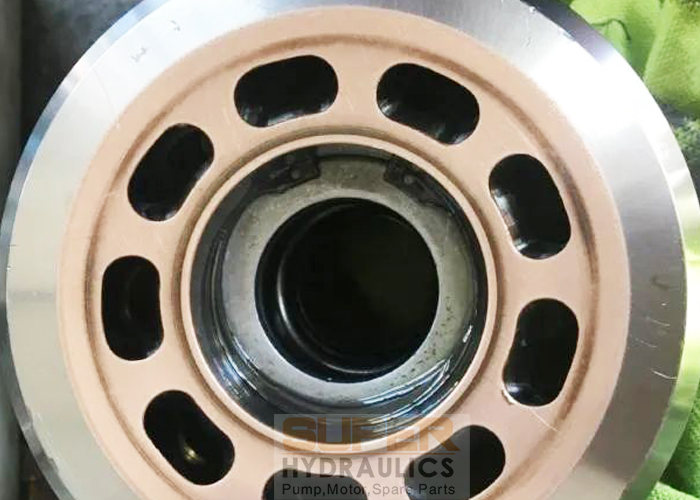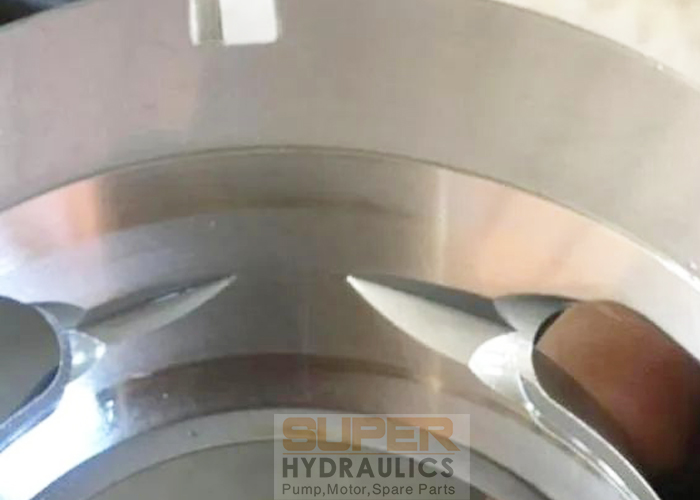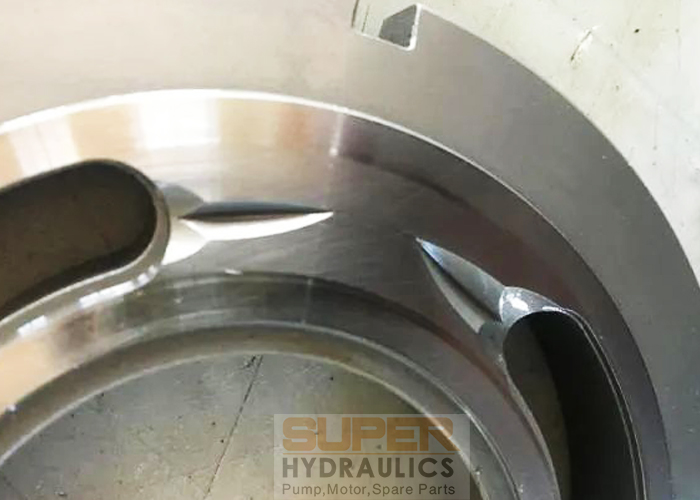A maintenance technician with over ten years of experience in Hydraulic Pump repair work undertook the repair job of an A4VG180 pump used in a concrete pump truck.
He purchased a brand new China made barrel and port plate from one Chinese factory which was lapped also by the factory before shipping. When he received the barrel and port plate, he carefully inspected the flow surfaces of the barrel and port plate to confirm that they had been ground. However, he still decided to use a marking paste to verify the matching accuracy of the friction pair. Indeed, he found two parallel marks on the flow surface of the barrel, so he proceeded to assemble it confidently, installing the pump on the test bench to begin testing.
When the A port is loaded, as the pressure at the A port rises, the leakage from the pump casing increases with the pressure. When the pressure at the A port approaches 200 bar, the flow at the A port is basically below 80L, while the leakage from the pump casing exceeds 100 liters.
With doubts, he disassembled the pump and found the following situation:

There are friction marks on both sides of the sealing strip inside and outside the oil suction and discharge window on the cylinder block, while the matching grinding marks between the sealing strips between the windows are still present.

Upon closer examination of the port plate, it is observed that both sides of the suction and drainage oil window's sealing bands on the flow surface also have signs of friction, while the paired grinding marks in the middle region of the inner and outer sealing bands are still present. This indicates that under static pressure conditions of the oil film, there is an extremely large gap in the middle area of the suction and drainage oil windows. The inner sealing band of the port plate has a phenomenon of being suspended in relation to the friction surface of the cylinder block under certain pressure, leading to the occurrence of a pressure relief passage. Therefore, during pump testing, the pressure cannot be loaded while the flow decreases. This is caused by the oil in the high-pressure measurement area of the pump bypassing through the noise-reducing groove on the port plate to the low-pressure measurement end, resulting in increased pressure while the flow decreases, without internal leakage into the pump housing.

The maintenance technician peeled the friction pair themselves, re-paired and ground them, then reassembled them onto the pump. The test showed everything was OK!
The problem was solved, but I just can't understand what methods and processes this factory that produces pump parts uses to manufacture port plates with such a concave phenomenon.
To buy high quality A4VG180 replacement spare parts, avoid same problem happen with your pump repair. It is always right to buy with Super Hydraulics!
Contact: Frank Xie
Phone: +86-18951952293
Tel: +86-25-83408096
Email: sales@super-hyd.com
Add: 97#, Luxiying, Gulou Dis, Nanjing, China.
We chat
